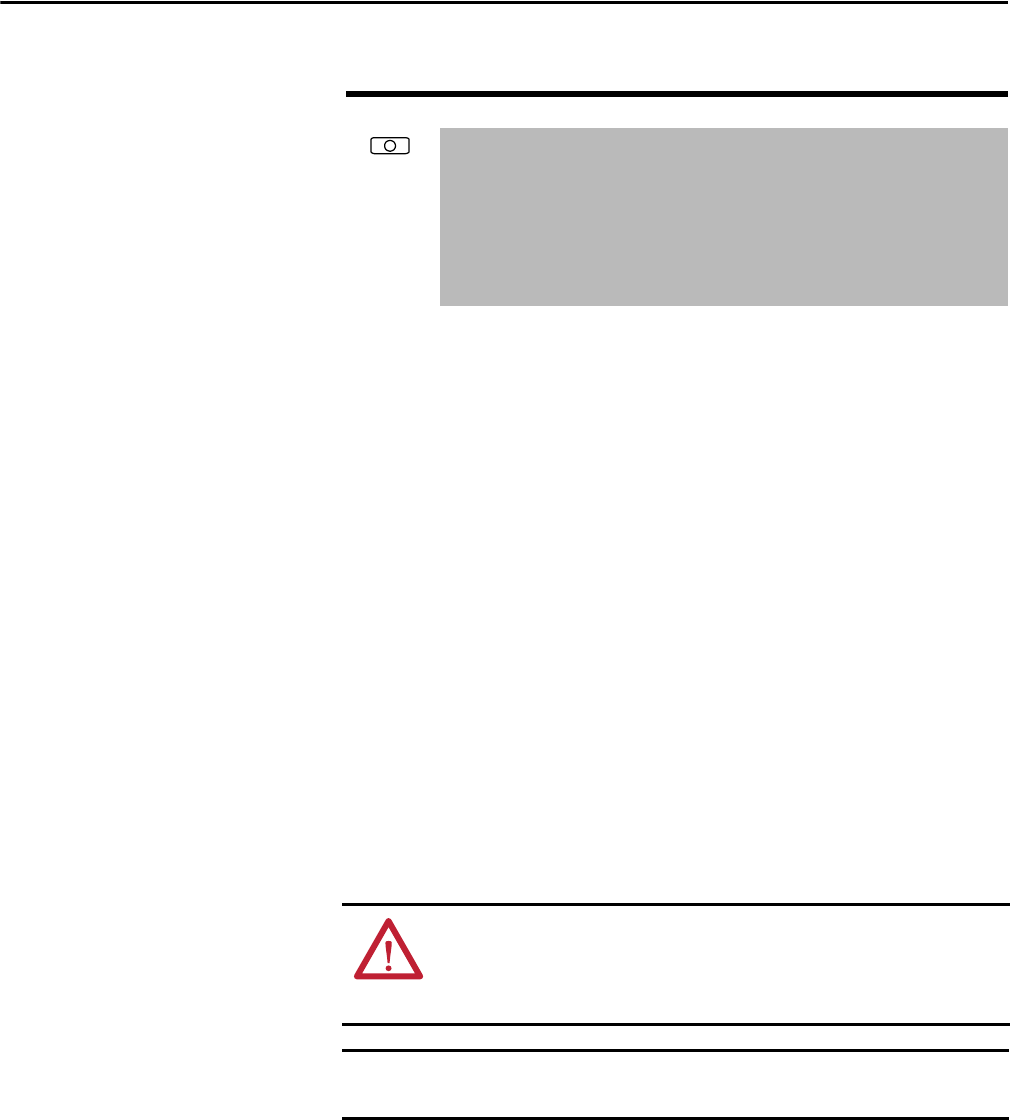Owner's manual
Table Of Contents
- Front Cover
- Important User Information
- Summary of Changes
- Table of Contents
- Introduction
- About the Drive
- Identifying the Drive by Cabinet Assembly ID Number
- LiquiFlo 2.0 Drive Component Locations
- Identifying the Power Module by Model Number
- AC Line I/O Board Description (Frame 3 Only)
- Standard I/O Board Description (Frame 3 Only)
- Combined I/O Board Description (Frame 4 Only)
- DPI Communication Ports
- Optional Equipment
- Planning the Installation
- Mounting The Power Module and Grounding the Drive
- Installing Input and Output Power Wiring
- Completing the Installation
- Using the Start-up Routines
- Programming Basics
- Parameter Descriptions
- Troubleshooting the Drive
- Verify that the DC Bus Capacitors are Discharged Before Servicing the Drive
- Determining Drive Status Using the Status LEDs
- About Alarms
- About Faults
- Diagnostic Parameters
- Common Symptoms and Corrective Actions
- Replacement Parts
- Board Replacement, Firmware Setup Procedures
- Troubleshooting the Drive Using the OIM
- Checking the Power Modules with Input Power Off
- Technical Specifications
- Using the OIM
- Installing and Removing the OIM
- Display Description
- OIM Menu Structure
- Powering Up and Adjusting the OIM
- Selecting a Device in the System
- Using the OIM to Program the Drive
- Monitoring the Drive Using the Process Display Screen on the OIM
- Displaying and Changing the OIM Reference
- Customizing the Process Display Screen
- Customizing the Function Keys
- Controlling the Drive From the OIM
- LiquiFlo 2.0 Drive Frame 3 Wiring Diagrams
- LiquiFlo 2.0 Drive Frame 4 Wiring Diagrams
- Index
- Back Cover

Rockwell Automation Publication D2-3518-3 - May 2013 85
Chapter 9
Provides a manual or automatic method for setting IR Voltage Drop (62) and
Flux Current Ref (63), which affect sensorless vector performance. Valid only
when Torque Perf Mode (53) is set to Sensrls Vect or SV Economize.
Ready (0) = Parameter returns to this setting following a Static Tune or Rotate
Tune. It also permits manually setting IR Voltage Drop (62) and Flux Current
Ref (63).
Static Tune (1) = A temporary command that initiates a non-rotational motor
stator resistance test for the best possible automatic setting of IR Voltage Drop. A
start command is required following the initiation of this setting. The parameter
returns to Ready (0) following the test, at which time another start transition is
required to operate the drive in normal mode. Used when the motor cannot be
uncoupled from the load.
Rotate Tune (2) = A temporary command that initiates a Static Tune followed
by a rotational test for the best possible automatic setting of Flux Current Ref. A
start command is required following initiation of this setting.
The parameter returns to Ready (0) following the test, at which time another
start transition is required to operate the drive in normal mode.
Calculate (3) = This setting uses motor nameplate data to automatically set IR
Voltage Drop and Flux Current Ref.
61 Autotune
Range: 0 = Ready
1 = Static Tune
2 = Rotate Tune
3 = Calculate
Default: 3 = Calculate
Access: 0 Path: Motor Control > Torq Attributes
See also: 53, 62, 63
ATTENTION: Rotation of the motor in an undesired direction can occur during
this procedure (Autotune [61] = Rotate Tune [2]). To guard against possible
injury and/or equipment damage, it is recommended that the motor be
disconnected from the load before proceeding.
IMPORTANT
Rotate Tune (2) is used when motor is uncoupled from the load. Results may
not be valid if a load is coupled to the motor during this procedure.










